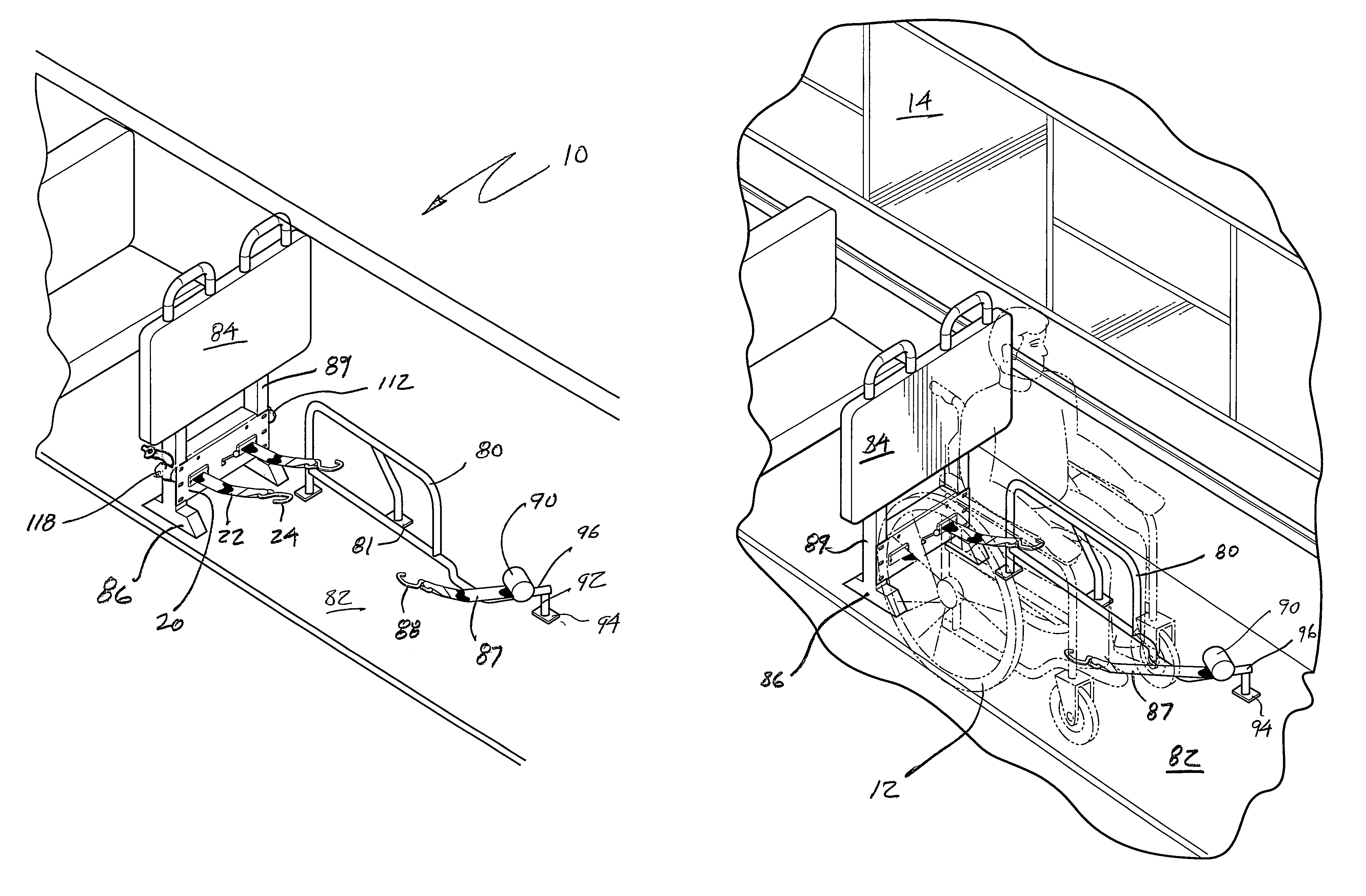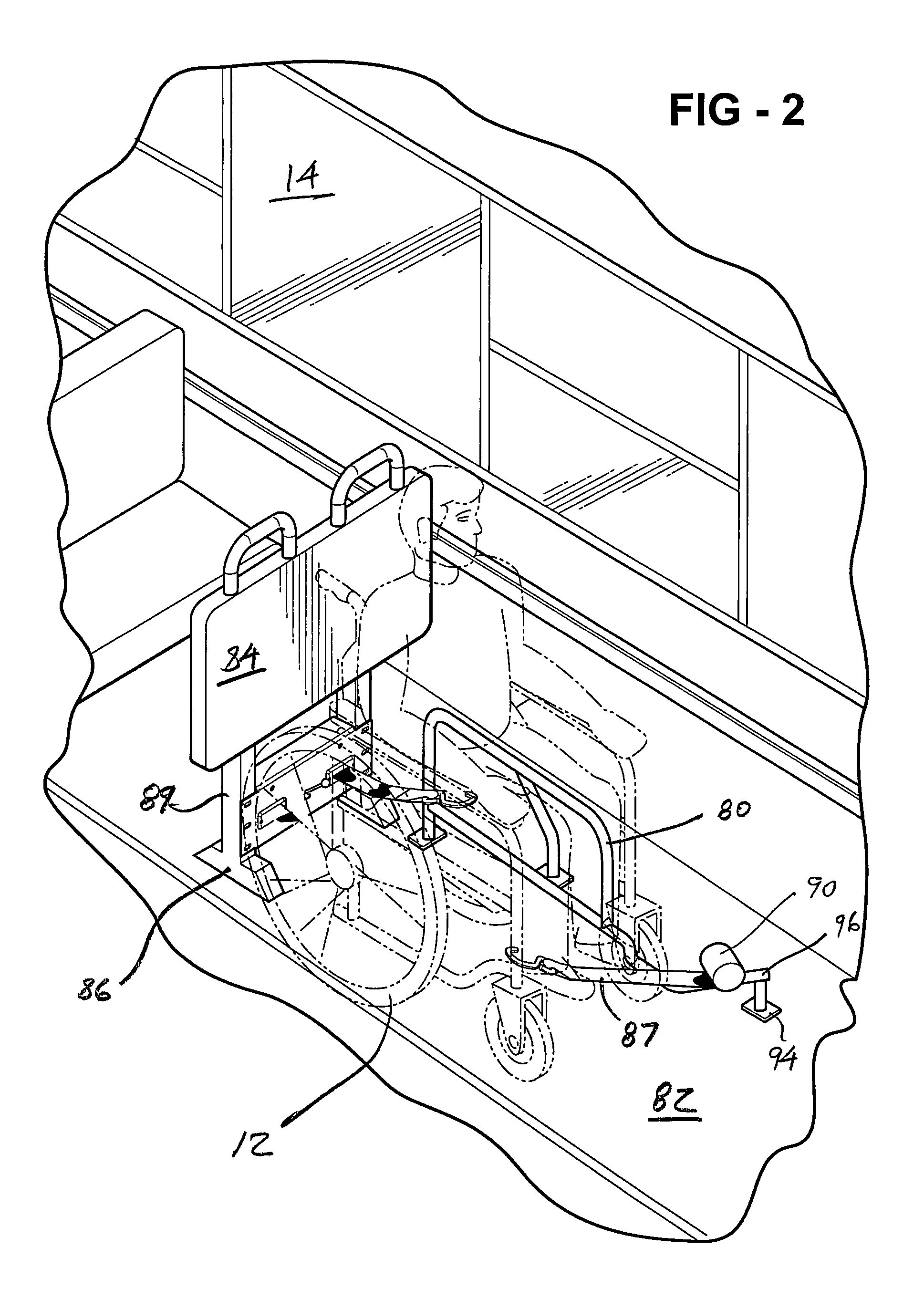Compact wheelchair restraint system with housing and release
a wheelchair and housing technology, applied in the direction of load securing, transportation and packaging, transportation items, etc., can solve the problems of unreliable after repeated use, complex installation and maintenance, and difficult use of systems,
- Summary
- Abstract
- Description
- Claims
- Application Information
AI Technical Summary
Benefits of technology
Problems solved by technology
Method used
Image
Examples
Embodiment Construction
[0030]With reference first to FIG. 1 and FIG. 2, the overall environment in which the invention is utilized will be best appreciated. In a typical vehicle 14, the apparatus 10 is utilized to secure a wheelchair 12 within a pre-designated location or “station” within a vehicle, such as a bus, train car or other vehicle. One lateral side of the area or station in which the wheelchair 12 is secured is provided with a barrier 80 which is affixed to the floor 82 of the vehicle 14 utilizing mounting plates 81. Barrier 80 serves to restrict the lateral movement of a wheelchair 12 positioned within the wheelchair station, and also to provide a supplemental hand hold which may be used by a wheelchair occupant during the process of securing the wheelchair 12 in the station.
[0031]Typically, the wheelchair station is defined in the rear by bulkhead 84, at one lateral side by the barrier 80, at the other lateral side by the aisle of the vehicle, and in the front by the back of the next seat or c...
PUM
 Login to View More
Login to View More Abstract
Description
Claims
Application Information
 Login to View More
Login to View More - R&D
- Intellectual Property
- Life Sciences
- Materials
- Tech Scout
- Unparalleled Data Quality
- Higher Quality Content
- 60% Fewer Hallucinations
Browse by: Latest US Patents, China's latest patents, Technical Efficacy Thesaurus, Application Domain, Technology Topic, Popular Technical Reports.
© 2025 PatSnap. All rights reserved.Legal|Privacy policy|Modern Slavery Act Transparency Statement|Sitemap|About US| Contact US: help@patsnap.com



